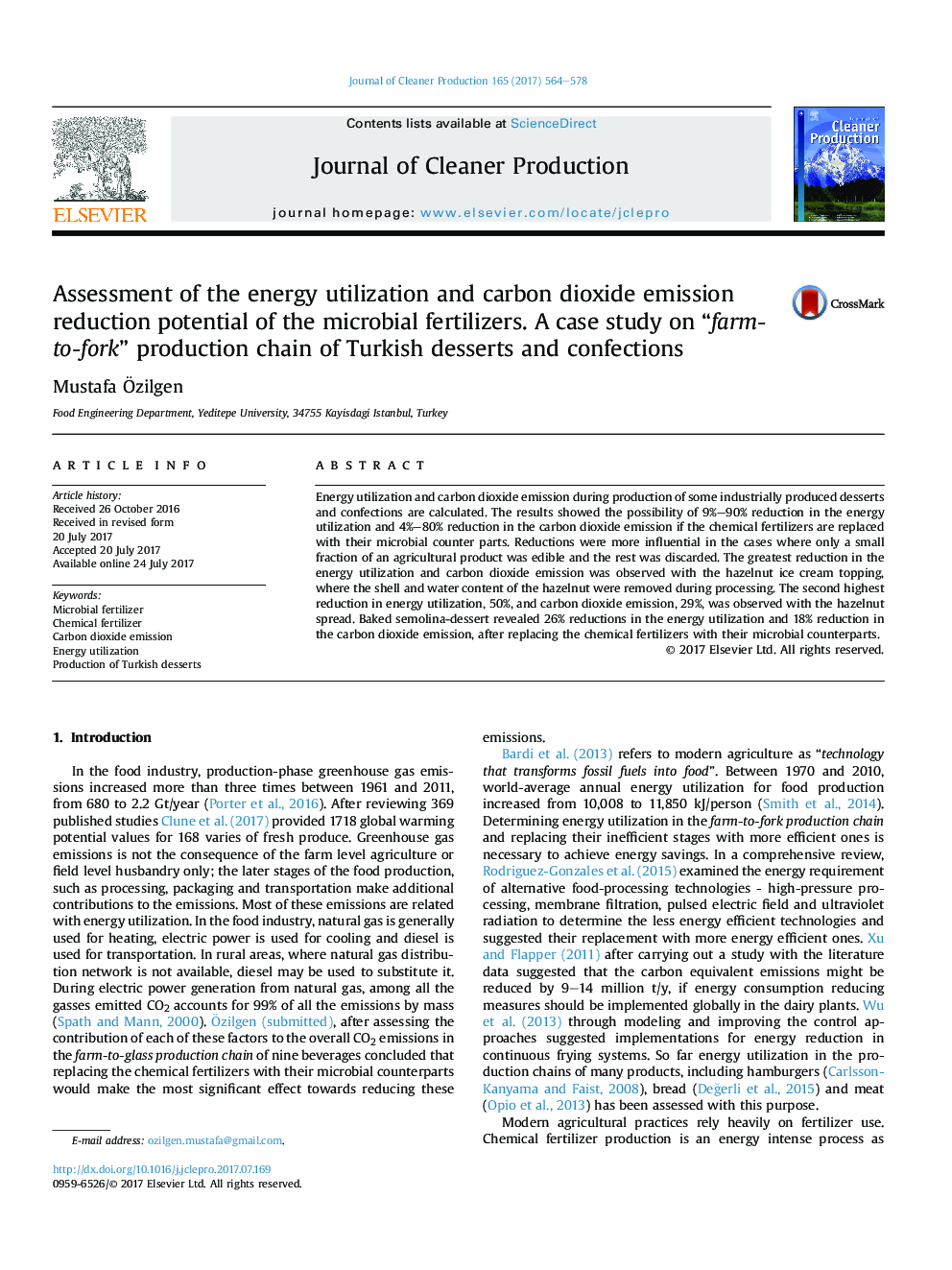| کد مقاله | کد نشریه | سال انتشار | مقاله انگلیسی | نسخه تمام متن |
|---|---|---|---|---|
| 5480028 | 1522089 | 2017 | 15 صفحه PDF | دانلود رایگان |
عنوان انگلیسی مقاله ISI
Assessment of the energy utilization and carbon dioxide emission reduction potential of the microbial fertilizers. A case study on “farm-to-fork” production chain of Turkish desserts and confections
ترجمه فارسی عنوان
ارزیابی استفاده از انرژی و پتانسیل کاهش دی اکسید کربن کود کودهای میکروبی. یک مطالعه موردی در مزرعه به فارک زنجیره تولید دسر ترکیه و شیرینی سازی
دانلود مقاله + سفارش ترجمه
دانلود مقاله ISI انگلیسی
رایگان برای ایرانیان
کلمات کلیدی
کود میکروبی، کود شیمیایی، انتشار دی اکسید کربن، استفاده از انرژی، تولید دسر ترکیه،
ترجمه چکیده
مصرف انرژی و انتشار دی اکسید کربن در طول تولید برخی از دسرها و شیرینی های صنعتی تولید شده محاسبه شده است. نتایج نشان داد که اگر کودهای شیمیایی با قطعات ضد میکروبی آنها جایگزین شوند، احتمال کاهش 9 تا 90 درصد در مصرف انرژی و کاهش 4 تا 80 درصدی انتشار دی اکسید کربن وجود دارد. کاهش در مواردی که فقط یک کسر کوچکی از یک محصول کشاورزی خوراکی بود و بقیه نیز از بین رفته بود، تاثیر بیشتری داشت. بزرگترین کاهش در مصرف انرژی و انتشار دی اکسید کربن با برداشتن بستنی فندق مشاهده شد، جایی که پوسته و میزان آب فندق در طی پردازش حذف شدند. دومین میزان کاهش مصرف انرژی، 50٪ و انتشار دی اکسید کربن 29٪ با گسترش فندق مشاهده شد. پودر سمولینا دسر، پس از جایگزینی کودهای شیمیایی با همتایان میکروبی آنها، کاهش 26 درصدی مصرف انرژی و کاهش 18 درصدی انتشار دی اکسید کربن را نشان داد.
موضوعات مرتبط
مهندسی و علوم پایه
مهندسی انرژی
انرژی های تجدید پذیر، توسعه پایدار و محیط زیست
چکیده انگلیسی
Energy utilization and carbon dioxide emission during production of some industrially produced desserts and confections are calculated. The results showed the possibility of 9%-90% reduction in the energy utilization and 4%-80% reduction in the carbon dioxide emission if the chemical fertilizers are replaced with their microbial counter parts. Reductions were more influential in the cases where only a small fraction of an agricultural product was edible and the rest was discarded. The greatest reduction in the energy utilization and carbon dioxide emission was observed with the hazelnut ice cream topping, where the shell and water content of the hazelnut were removed during processing. The second highest reduction in energy utilization, 50%, and carbon dioxide emission, 29%, was observed with the hazelnut spread. Baked semolina-dessert revealed 26% reductions in the energy utilization and 18% reduction in the carbon dioxide emission, after replacing the chemical fertilizers with their microbial counterparts.
ناشر
Database: Elsevier - ScienceDirect (ساینس دایرکت)
Journal: Journal of Cleaner Production - Volume 165, 1 November 2017, Pages 564-578
Journal: Journal of Cleaner Production - Volume 165, 1 November 2017, Pages 564-578
نویسندگان
Mustafa Ãzilgen,
